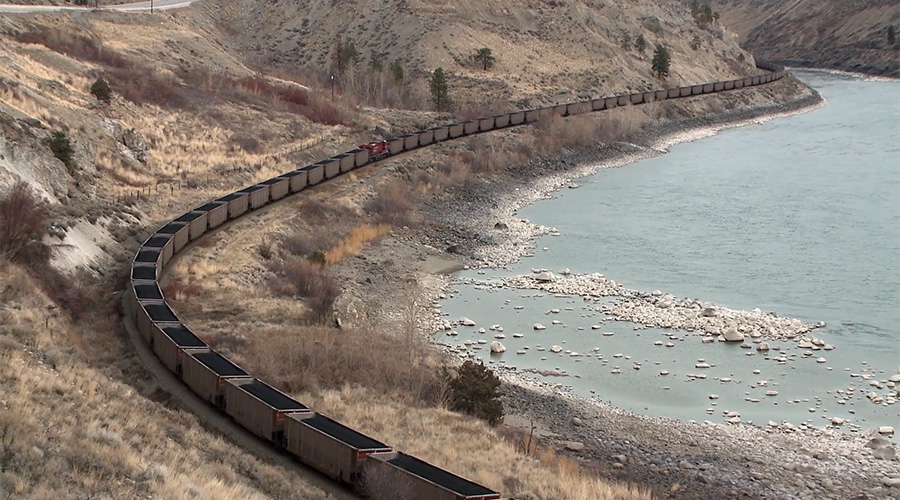AAR Research Review: Three Class Is address automation efforts
3/19/2021
By Jeff Stagl, Managing Editor
As part of the Association of American Railroad’s 26th Annual Research Review on March 16, officials from three Class Is discussed a number of technologies that are helping the railroads boost efficiency and advance automation. Held virtually for the second straight year, the review provides updates on research and development activities at the Transportation Technology Center Inc. in Pueblo, Colorado.

During his keynote address, Kansas City Southern Executive Vice President and Chief Operating Officer Jeffrey Songer and members of his team shared examples of how the Class I is leveraging technologies more than ever across the company — especially to improve sustainability and safety. Technology will shape the railroad’s future, said Songer.
“We need to adapt to new ways of doing business,” he said. “Technology now touches every aspect of our business.”
Innovations in locomotives and equipment — such as the use of low-sulfur fuels and numerous monitoring devices — already are paying off in a big way. KCS had set a goal to reduce its overall air emissions 20% by 2025, but the Class I is on pace to achieve that objective much earlier — by the end of this year.
Other technologies now employed at KCS include:
- handheld devices used by engineers and conductors that enable them to skip paperwork duties in a yard office and head straight to a train to begin a trip;
- a virtual reality training application for conductors and other employees;
- more sophisticated cameras in various vehicles;
- drones that help supplement bridge inspections;
- robotic process automation that eliminates repetitive daily tasks;
- machine learning (ML) and dashboards, including a live terminal inventory dashboard; and
- a convergence of mobile apps that help with work-order tracking.
KCS also has installed an autonomous rail-car inspection portal — also known as a machine vision portal — on its mainline in northern Mexico that uses cameras and sensors to inspect cars as a train passes through. A 360-degree view of a car helps identify defects so workers no longer need to climb atop a car to perform visual inspections.
When defects are detected, a train is stopped and issues are addressed more quickly. KCS is developing 12 more autonomous rail-car inspection portals.
Technological advances also were the basis of a presentation by Mabby Amouie, Norfolk Southern Railway’s senior director of analytics and chief data scientist. He focused on predictive analytics, and the benefits the Class I is deriving from it.
NS determined it had a data alignment problem with regard to rail wear since the railroad had accumulated terabytes of historical data, said Amouie. In addition, wear rates are location specific, GPS information varies, end points change and anomalies can surface.
NS now uses artificial intelligence (AI) and ML systemwide to gauge rail wear. Every curve and tangent has been identified by a track geometry car for help with systemwide data alignment.
AI and ML enable the railroad to accurately predict rail wear five years out, said Amouie.
“The results have been extraordinary,” he said.
AI and ML open opportunities to improve grinding profiles and the use of friction modifiers.
“The big potential is in evaluating the impacts of potential changes,” said Amouie.
Automation also was the primary topic of a presentation by Candian Pacific Chief Engineer Kyle Mulligan, who reviewed advances in automated condition assessment, including data gathering and analytics.
Similar to KCS, CP uses automated car inspection portals that “stitch together images of rail cars in their natural state — in motion,” said Mulligan. CP uses data from the portals and numerous wayside detectors to identify equipment issues.
“We continue to move toward fully automated train inspections,” said Mulligan.
For example, the portals and wayside detectors have helped CP identify 87% more car defects on potash trains.
CP also is employing a cracked wheel detection system to aid wheel inspections. The Class I co-developed and deployed an electromagnetic-based cracked wheel detection system to inspect and renew wheelsets that might be breaking, said Mulligan.
In addition, CP is enhancing rail-flaw detection via an electromagnetic field inspection approach to move toward condition-based grinding intervals.
The Class I is trying to leverage Big Data to analyze vast amounts of data and obtain more automated condition assessments of various equipment and components, said Mulligan. CP is concentrating Big Data on predictive bearing failures, train airflow monitoring, automated track geometry measurement systems, broken rail detection in dark territory, cold wheel technology, automated train inspection portals, wheel life forecasting and wheel impact load detectors.


